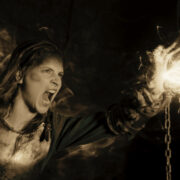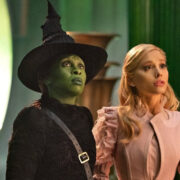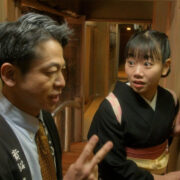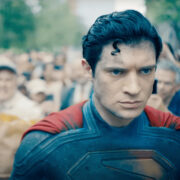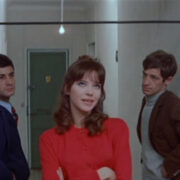Cannes Film Festival 2024: ALL WE IMAGINE AS LIGHT & WHEN THE LIGHT BREAKS

Wilson is a cinema enthusiast based out of Toronto, Canada.…
The following two films are examples of how to tell emotionally sound stories in a gentle and efficient manner. Payal Kapadia‘s Grand Prix winning All We Imagine as Light deserves all the praise it’s been getting, while Rúnar Rúnarsson‘s When the Light Breaks impresses as a tale that showcases the tragic subtleties of grief.
All We Imagine as Light (Payal Kapadia)

For a film that’s so quiet and gentle, All We Imagine as Light hits like a towering tide of unexpected proportions. A film that bathes in its reverence for melancholy, yet ends with one of the most poignant revelations in the expressive beauty of life itself. Payal Kapadia is truly a special filmmaker.
Crafted with precise realism, when the film starts, it’s not clear if we’re watching a documentary or narrative feature. This is perhaps a fitting choie for Kapadia, who is also a documentary filmmaker. Transitioning from sweeps of a busy Mumbai, we’re introduced to Prabha (Kani Kusruti) and Anu (Divya Prabha), two nurses working at a local hospital, who also happen to be roommates. Both struggle with relationship issues of their own, and get lost in the anonymity of identity inherent to the busy city they inhabit.
Much of what happens in the film feels like a soft spoken internal conversation between the film’s characters, with the audience just observing in the background. Yet, despite this passive vehicle of narration, every decision made by Kapadia feels purposeful. The way she draws parallels between Mumbai’s fallacy as a land of opportunity, and our self-created illusions of life itself, particular as it pertains to love, are drawn out in such a natural way. The film seems to say so little on the surface, but ends up moving mountains of emotional depth in conveying its message about everything form class, love and the intangibles of being content with life.
Stylistically, Kapadia seems to emulate both Wong Kar-Wai and You Hsiao-Hsien, highlighting the beauty of longing and restrained expressions of love and desire. And in her own way, of course, she creates a renewed voice that suits the type of personal stories she wants to tell. Topshe’s quaint piano accompaniment, in particular, is paired with flares of modernism, which is punctuated by a pulsating final beat as the film ends. The ending creates a reflective energy that invites further deliberation of the film’s themes and emotions, in a manner that feels both natural and well earned.
All We Imagine as Light is an ode to finding beauty in life, despite (or perhaps in spite of) one’s circumstances. Its dreamscape stylistic choices, with hints of realism, creates a surreal canvas that is unlike anything I’ve ever seen. Although the film might not necessarily feel substantial at first, emotions slowly accumulate like an expert bricklayer building a house of contained affections. Kapadia stands out as a refreshing voice in modern cinema.
When the Light Breaks (Rúnar Rúnarsson)
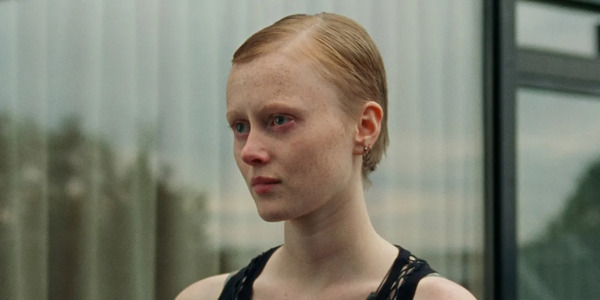
With a short runtime of only 82 minutes, When the Light Breaks (Ljósbrot) is a sombre Icelandic drama that shines in its truly restrained approach to storytelling. Rúnar Rúnarsson proves to be a confident filmmaker, and has crafted a seemingly emotionally blunted narrative that somehow breaks through.
When we’re first introduced to Una (Elín Hall) and Diddi (Baldur Einarsson) as lovers, it becomes apparent that their relationship is being kept as a secret. It so happens that Didi is still in a relationship with Klara (Katla Njálsdóttir), but plans to end things with her the next morning. Unfortunately, tragedy strikes following an explosion in a tunnel, and both Una and Klara grieve over a common lover, with neither being able to fully acknowledge the other’s true feelings.
Rúnarsson takes an overly quiescent approach to processing grief and trauma, and rarely allows his actors to unravel in the ways that you typically expect. When emotional outbursts do happen, these moments are brief and succinct, but enough to sustain an aura of tragedy essential to the film. If anything, it creates a renewed sense of authenticity, elevating a rather tense narrative that would’ve otherwise seemed conventional.
The film also draws parallels human emotions tragedy and nature, curating a worldview hinged on the universality of grief. As both Una and Klara grieve over the same person, and the secrecy of their relationships eventually become transparent, the commonality of shared sadness washes away any expected animosity. Much like glimpses of the sun setting depicted in the film, there’s a natural understanding when it comes to love, which can at least temporarily mute our indifferences.
One might argue that Rúnarsson’s restrained narration gets in the way of any true emotional catharsis, but the film somehow manages to find its footing in a more contemplative fashion. Its closing shot consists of a mellowed journey through the open sea, which goes full circle in bringing the audience back into a natural setting to process their thoughts. This is strong filmmaking that invites deliberation, far beyond what’s said and done on screen.
Does content like this matter to you?
Become a Member and support film journalism. Unlock access to all of Film Inquiry`s great articles. Join a community of like-minded readers who are passionate about cinema - get access to our private members Network, give back to independent filmmakers, and more.
Wilson is a cinema enthusiast based out of Toronto, Canada. He escapes from his day job by writing random thoughts about cinema on the internet. Although he has a longstanding penchant for Hong Kong cinema, he considers himself to be an advocate for Asian cinema in general. He has been attending the Toronto International Film Festival every year since 2005, and more of his work can be found on his website: www.wilson-kwong.com.

